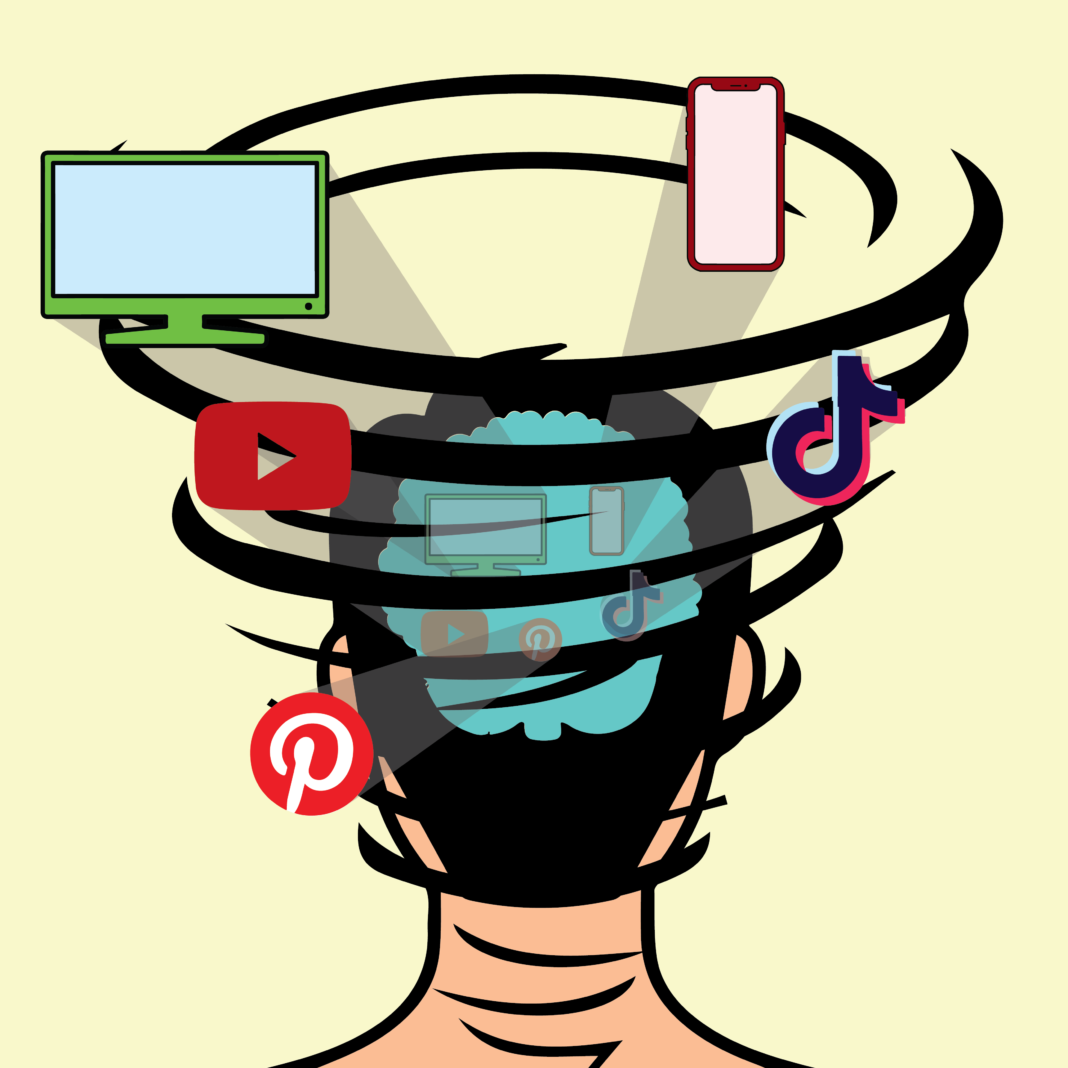Anyone who has broken their phone and had to wait a few days to replace it understands how thoroughly technology permeates our everyday lives. Young adults especially filter their experiences, feelings and ideas through the internet before fully forming a perspective and feel in the dark when they can’t. As we further invest in a future intertwined with comprehensive internet access, the internet’s tendency to overwhelm individuals’ identities and stifle creativity may take more from the marketplace of ideas than it adds.
The “marketplace of ideas” refers to the theory of free exchange of competing thought in an unregulated market as supported by the First Amendment. In recent years, this marketplace has been overwhelmed with content to the point where it can be difficult to navigate or gain any valuable information from.
A 2022 Pew Research Center survey found that 95% of surveyed U.S. teens have access to a smartphone and 97% say that they use the internet daily. These teens are bombarded around-the-clock with creative content that shapes their perspective and preferences, with or without their knowledge.
This infinite access to information seems to bring endless possibilities, but overuse of technology, specifically the internet, simultaneously brings on a multitude of negative consequences. Overuse of the internet and social media has been linked to increased depression and anxiety, attention-deficit symptoms and sleep deficiency among other issues.
Being asked any variation of the dreaded icebreaker question “what do you do for fun?” reminds me of how little I invest my time and energy in things outside of school and work. Even the activities I scrounge up to answer that question are activities I used to spend a lot of time on, but now rarely do outside of when it feels necessary.
When it comes to being creative, I’ve found it especially difficult to cut through the noise with anything original. In part because there is so much other content out there, it often feels as if everything has already been done, but also because it feels as if I’m in a constant state of writer’s block.
These issues likely have something to do with the six-plus hours a day spent on my phone and the endless amount of time working on a computer. A majority of this time is spent intaking media centered around other people’s ideas.
I’m not alone in this experience. The average U.S. Gen Z’s screen time is over 7 hours a day. Constantly distracted, it’s difficult to form original ideas that aren’t influenced by the content we’re being fed. 95 million photos and videos are posted to Instagram every day and over 500 hours of video are uploaded to Youtube every minute. Every minute, 167 million TikTok videos are watched.
It seems like few young adults spend time sitting with their own thoughts anymore. Many of us aren’t cultivating much and few have consistent hobbies outside of media consumption. When it comes to exposure to creativity and innovation, we are constantly inhaling and never breathing out.
“I’ve always prided myself on having an individual creative identity, but after social media took off, my identity started rapidly changing and I began to feel some identity confusion,” senior creative advertising major Asha Shah said. “I see all of these people creating amazing things and see different trends going around and I’m interested in a lot of them, but I can’t tell if I’m always actually interested or if it’s just what’s being put in front of me.”
While the internet has vastly expanded the scope of creation, a majority of content feels like an original concept repurposed or mimicked time and time again. This also breeds a climate of comparison, where if your work doesn’t look “as good” as someone else’s, it feels insignificant.
“It’s a constant internal battle of trying to figure out balancing my individuality with inspiration I draw from external places,” Shah said.
This, combined with the quickening and increasingly influential trend cycle has led to a strain of groupthink that promotes the status quo and bars creativity. I often find myself being influenced without my consent or knowledge, and when I stop to think about it, it’s difficult to discern my actual tastes and style from what is popular. The internet presents templates for how we should live and create.
The need to revitalize individual creativity has been intensified by the rise of new sophisticated AI technology.
According to Harvard Business Review, despite the remarkable capabilities of generative AI models, there are still accuracy issues that leave a demand for human creators as “the uniqueness of human creativity including awareness of social and cultural context, both across borders and through time will become important leverage.”
Technology and specifically the internet are unparalleled tools that present us with great opportunities to expand our knowledge and use that knowledge to fuel our creativity and innovation. While it’s valuable that these tools can inform our behaviors, it is important that we reprioritize taking time away from the noise to pursue our interests and create without checking what we produce against others’ work. Without that, we risk the marketplace of ideas becoming a homogenous echo chamber of the same few popular ideas and the loss of creations that could have immense potential.







